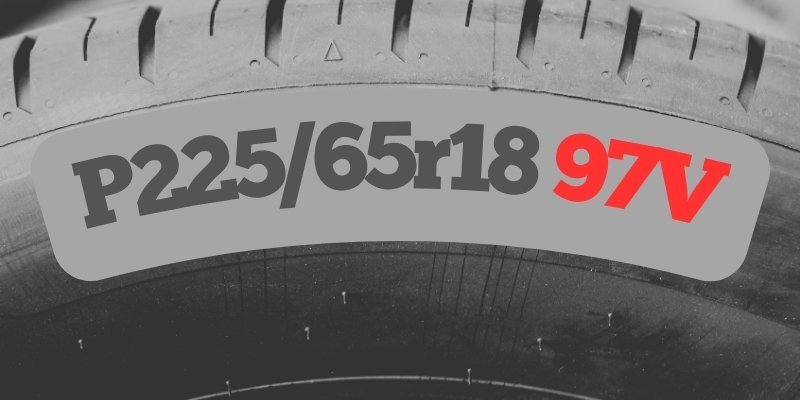What Does 97V Mean on a Tire?

The 97V marking on a tire indicates its load index and speed rating. The number 97 represents the tire’s maximum load capacity, while the letter V denotes its maximum speed capability. This combination ensures your tires can safely handle your vehicle’s weight and speed requirements.
Decoding the Tire Code
Have you ever looked at your car’s tires and wondered what all those numbers and letters mean? It’s like a secret code, but don’t worry – we’re here to crack it! Today, we’re focusing on one part of this code: the 97V marking.
Breaking Down the Numbers
Let’s start with the number 97. This isn’t just a random number picked out of thin air. It’s called the load index, and it tells you how much weight the tire can safely carry.
Think of it like this: imagine you’re packing for a trip. The load index is like the weight limit on your suitcase. Just as you wouldn’t want to overstuff your suitcase and risk it bursting open, you don’t want to overload your tires.
In the case of 97, this means the tire can handle up to 1,609 pounds (or 730 kilograms) of weight. That’s about the same as a grand piano or a large horse!
The Need for Speed
Now, let’s look at the letter V. This is called the speed rating, and it tells you the top speed the tire can safely handle.
Imagine you’re on a roller coaster. The speed rating is like the maximum speed of the ride. Just as a roller coaster is designed to be safe up to a certain speed, your tire is tested to perform safely up to a specific speed.
For a V-rated tire, that maximum speed is 149 mph (or 240 km/h). That’s faster than most of us will ever drive, but it’s good to know your tires can handle it if needed.
Why Does This Matter?
You might be thinking, “That’s interesting, but why should I care?” Well, these numbers are crucial for your safety and your car’s performance.
Using tires with the right load index ensures your car can carry its weight without putting too much stress on the tires. This helps prevent blowouts and improves your car’s handling.
The speed rating is important too. If you use tires with a lower speed rating than recommended, your car might not handle well at high speeds. It’s like trying to run a marathon in flip-flops instead of running shoes!
Choosing the Right Tires
When it’s time to buy new tires, make sure to check your car’s manual or the sticker inside the driver’s door. It will tell you the right load index and speed rating for your vehicle.
Remember, it’s okay to use tires with a higher load index or speed rating than recommended, but never go lower. It’s like buying a stronger lock for your house – extra security is fine, but less security could be risky.
Beyond 97V
While we’ve focused on 97V, there are many other combinations out there. The load index can range from 0 to 279, and speed ratings go from L (75 mph) all the way up to Y (186 mph).
Some high-performance cars might use tires with higher ratings, like 101Y. On the other hand, a small economy car might use something like 82T. It all depends on the car’s weight and top speed.
Tire Care Tips
Now that you know what 97V means, here are some quick tips to keep your tires in top shape:
- Check your tire pressure monthly
- Rotate your tires regularly
- Keep an eye on your tread depth
- Avoid hitting curbs or potholes
Conclusion
Understanding what 97V means on your tire is more than just knowing a fun fact. It’s about ensuring your safety on the road and getting the best performance from your vehicle.
Next time you look at your tires, you’ll see more than just rubber – you’ll see a code that tells you about your car’s capabilities. Remember, the right tires are key to a smooth, safe ride.
So, keep this knowledge in mind when it’s time for new tires, and you’ll be rolling in the right direction!

Meet Caitlin McCormack, a Tire Size Expert and Blogger Passionate About Everything Related to Tires. With Years of Experience in the Tire Industry, Caitlin Has Become an Expert in Tire Sizes and Their Impact on Vehicle Performance.
